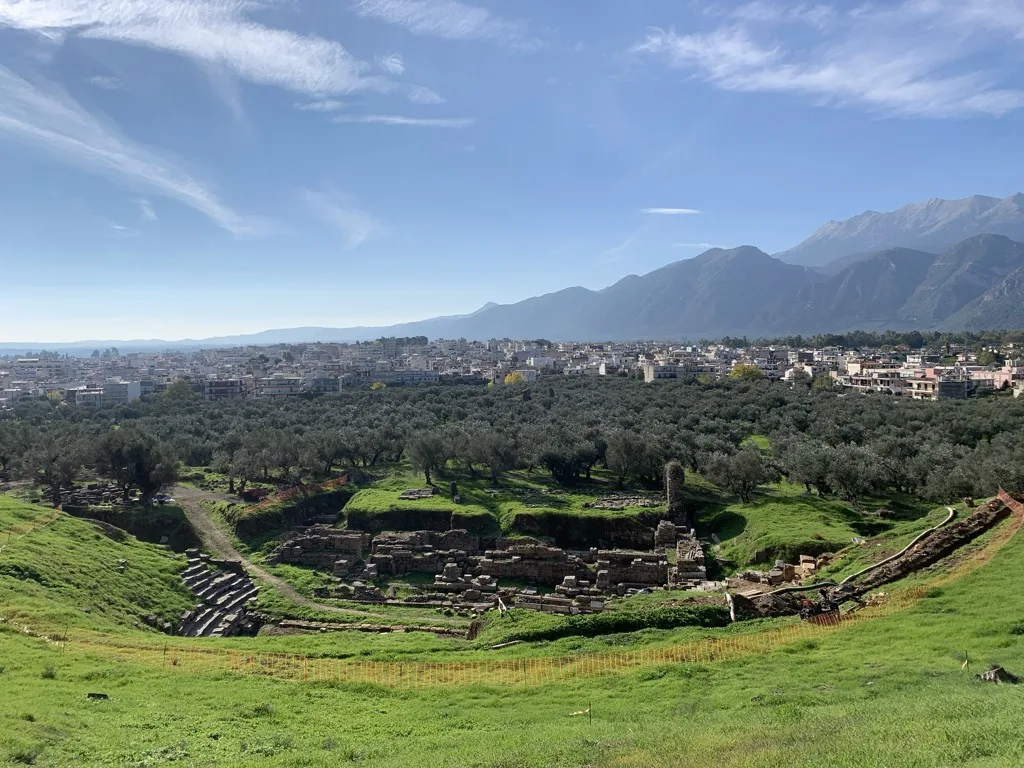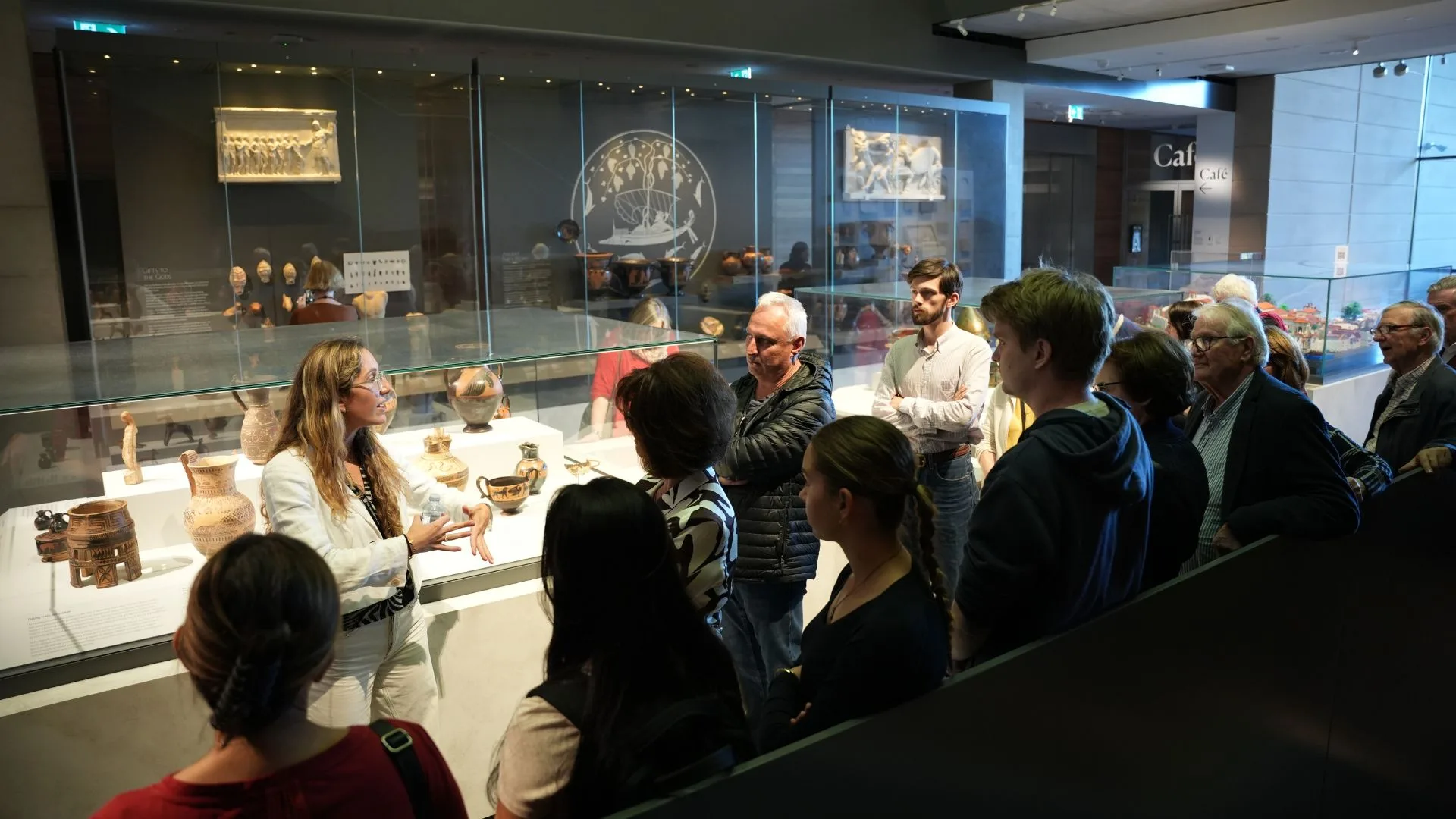By Martina Simos
Archaeologist Daphne Martin (nee Zafeirakou) is proud of her Spartan roots. Although she was born in Paris, France, Daphne is based in Cambridge, the United Kingdom. Last month, she was in Australia to present a talk at the University of Sydney in the Chau Chak Wing Museum that has 600 various objects of Greek origin.
She spoke with The Greek Herald about her love of archaeology, especially the ancient world of Sparta, her mission to put Sparta back on the map, and how she is working towards a book on the material construction of identity in Sparta and Laconia, prior to the Persian Wars.
What part of Greece are your parents from?
My mum grew up in Sparta and our village is Karyes, Lakonia, the home of the caryatids, according to Pausanias.
What prompted you to study archaeology as a PhD candidate at the University of Cambridge?
I became truly enamored with the ancient world from the age of about 14, I would say. Going to Sparta every summer, I was perplexed why the ancient ruins weren’t receiving any attention in comparison to the Acropolis. I made it my mission to put Sparta back on the map, and that’s what drove me to undertake my undergraduate degree in Classics and History of Art at Yale University (USA) and then to pursue and complete my PhD at the University of Cambridge on the material culture of Sparta and Laconia.

What was your thesis about?
My thesis is about the material construction of identity in Sparta and Laconia, prior to the Persian Wars. Through focusing on archaeological evidence, I show a new side of Sparta, beyond stereotypes of an austere and warfare-oriented society. I also shed light on overlooked groups such as the perioikoi, and try to understand how they created and preserved their own communities all around Laconia (similarly to the villages which dot the Laconian landscapes today, and each have their own character and sense of community).
I’m now working on turning this into a book and hope I will be able to share my discoveries both with the scholarly community and broader public.
When was the first time you did a dig? Where was it and was anything uncovered?
The first time I did in dig was Sparta (fittingly!). I had the opportunity to ‘shadow’ Greek archaeologists from the Laconian Ephorate of Antiquities as a high schooler, while they conducted excavations on Sparta’s acropolis as part of a restoration to make the site presentable for locals and tourists.
I remember being so excited to find a boar’s tooth – and learning from them that wild boars still roam the Taygetus mountain range to this day. I found that to be such a powerful and inspiring connection between Laconia’s stunning flora and fauna in antiquity and in modern times. Something that I think needs to be talked about more is not only the preservation of Laconia’s antiquities, but also its spectacular natural environment.

Where else have you been a part of an archaeological dig?
I have also worked at the Mycenaean settlement of Mygdalia Hill near Patras; the site of Eleutherna on Crete; the site of Molyvoti in Northern Thrace; the Amykles Research Project, a major sanctuary to Apollo outside of Sparta; the site of Selinunte on Sicily; and participating in a Cambridge field survey on Samos.
Describe why you were involved with the University of Sydney recently.
I was the William Ritche Visiting Fellow at the University of Sydney. I worked with Professor Tamar Hodos (Director of the Australian Archaeological Institute at Athens) on theoretical approaches to the circulation of material culture in the 1st millenium BCE Mediterranean.
During my time in Sydney, we organised a conference titled ‘Tracing Globalisation’ and got to exchange exciting ideas with colleagues from institutions around Australia and New Zealand. This is part of my planned postdoctoral research on Sparta’s links to the broader Mediterranean.
While in Sydney, I wanted to find a way to share my research on Laconian art and archaeology with the Greek community. Candace Richards (curator at the Chau Chak Wing Museum) and I came up with this idea for doing a gallery talk and interactive object handling session focused on Laconian objects in the collection.

Is there much of a demand to be an archaeologist in 2024?
You’d be surprised! It’s definitely a small world, where everyone sort of knows each other, especially in the context of Greek archaeology. I think what’s exciting about archaeology in the 21st century is the immense opportunities offered by digital technologies and Artificial Intelligence. I’m very excited to see how the field continues to evolve and develop over the coming decades, and hopefully I get to be part of it.

When is your next dig?
I’m actually paying a visit to the University of Sydney/AAIA’s Zagora project on Andros when I’m back in Greece later in September. This is a fantastic project sponsored by the Australian Archaeological Institute in Athens, and co-directed by Dr. Paul Donnelly, Dr Stavros Paspalas, and Prof Lesley Beaumont examining a unique and extensive Iron Age Settlement on the Cycladic Island. Other than that, I am planning to continue working on digs in Sparta and Samos for summers to come!
